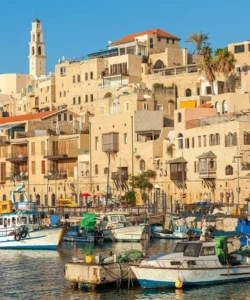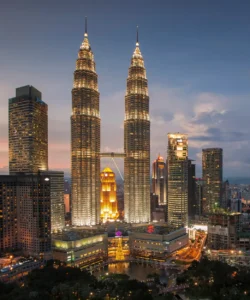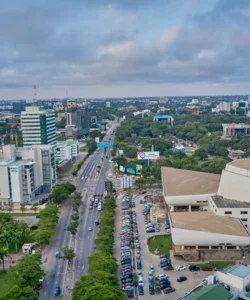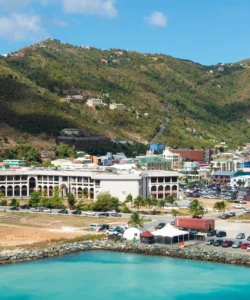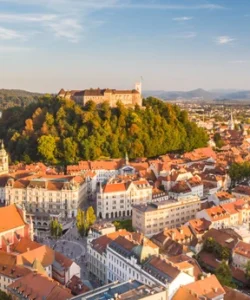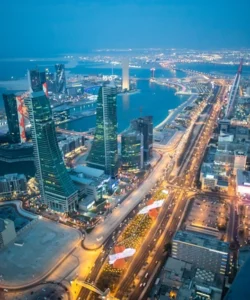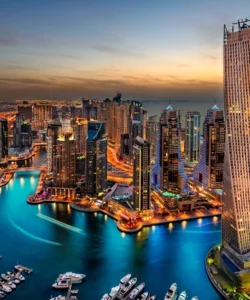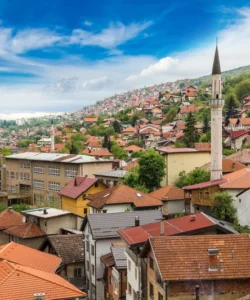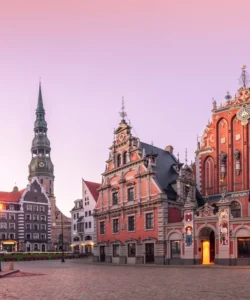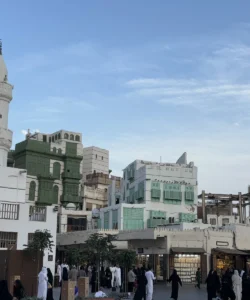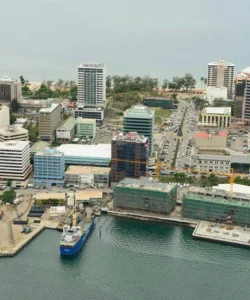French Guiana, an overseas department of France located on the northeastern coast of South America, offers a unique blend of European influence and Amazonian wilderness.
![]()
Here’s a detailed overview:
- Area: Approximately 83,534 km² (32,253 sq mi). It’s the largest overseas department of France.
- Population: Estimated at around 292,354 people as of January 2025. The population is diverse, with a mix of Creole, metropolitan French, Haitians, Surinamese, Antilleans, Chinese, Brazilians, South Asians, and indigenous communities.
- Language: French is the official language. Guianese Creole French is widely spoken, along with various indigenous languages and languages of immigrant communities. English is not widely spoken.
- Currency: Euro (€). As a department of France, it’s the only place in South America where the Euro is the official currency.
- Religion: Predominantly Roman Catholicism, adhered to by more than four-fifths of the population.
- Capital: Cayenne.
- Major Cities/Towns: Cayenne, Kourou, Saint-Laurent-du-Maroni.
Attractions & Wonders:
- Guiana Space Centre (Centre Spatial Guyanais) in Kourou: This is the most famous attraction. Operated by the European Space Agency (ESA), it’s a major spaceport where rockets are launched. Visitors can tour the facilities and sometimes even witness a launch.
- Devil’s Island (Île du Diable): Part of the Îles du Salut (Salvation Islands) archipelago, this infamous former penal colony housed political prisoners and hardened criminals. It’s now a poignant historical site that can be visited by boat.
- Amazonian Rainforest: French Guiana is dominated by vast, pristine rainforest, offering incredible opportunities for ecotourism, including wildlife spotting (monkeys, sloths, jaguars, diverse bird species), hiking, and river excursions.
- Kaw-Roura Marshland Nature Reserve: A protected wetland area known for its rich biodiversity, particularly caimans and various bird species. Boat tours are popular here.
- Cacao Village: A Hmong refugee village, offering a unique cultural experience with markets selling traditional crafts and food.
- Coastal Beaches: While not as extensively developed for tourism as some Caribbean islands, French Guiana has sandy beaches along its Atlantic coastline.
- Indigenous Villages: Opportunities to learn about the culture and traditions of the various indigenous communities, though often requiring specialized tours.
Architecture:
French Guianese architecture reflects its French colonial heritage and adaptation to the tropical climate.
- Colonial Buildings: In Cayenne, you’ll find historic buildings with Caribbean Creole influences, often painted in light colors like blue and yellow, with large verandas and louvered shutters.
- Traditional Housing: Amerindian residences in the interior are typically simple thatched-roof huts.
- Modern Structures: The Guiana Space Centre showcases modern, functional architecture related to space technology.
Roads:
Road conditions in French Guiana are generally considered fair to good, particularly around the major urban centers and along the coast. However, many areas, especially within the vast rainforest, are accessible only by river or air. It’s important to be aware of local driving customs and potential for heavy rainfall affecting road conditions.
Hotels:
Accommodation options in French Guiana range from modest hotels to a few more upscale establishments, primarily concentrated in Cayenne and Kourou. Some options include:
- Best Western Plus Amazonia (Cayenne): A well-known international chain hotel.
- Grand Hotel Montabo (Cayenne): Often cited as a good option in the capital.
- Hotel La Chaumiere (Matoury, near Cayenne): Offers a more suburban feel.
- Mercure Kourou Ariatel (Kourou): Convenient for those visiting the Space Centre.
Restaurants:
French Guianese cuisine is a fascinating fusion of French, Creole, African, Asian (especially Hmong), and Brazilian influences. You can expect to find a variety of culinary experiences.
- Cayenne’s Market: A great place to sample local street food and fresh produce.
- Creole Restaurants: Look for establishments serving traditional Creole dishes.
- French Bakeries and Bistros: Due to the French connection, you’ll find good quality bread, pastries, and more classic French dishes.
- Asian Influences: Restaurants offering Vietnamese and Hmong cuisine, particularly in areas with Hmong communities.
Cuisine:
French Guianese cuisine is diverse and flavorful:
- Staple Foods: Rice, plantains, cassava, and fresh fish are common.
- Seafood: Given its coastal location, fresh seafood is abundant, often prepared grilled, in stews, or with Creole sauces.
- Local Produce: A wide array of tropical fruits (mangoes, pineapples, passion fruit, açai) and vegetables.
- Dishes to Try:
- Bouillon d’Awara: A complex and flavorful traditional soup, often considered the national dish, made with awara fruit, smoked fish, chicken, and vegetables.
- Colombo: A curry-like dish with various meats (chicken, fish) and vegetables, similar to those found in the French Caribbean.
- Pimentade: A spicy fish stew.
- Roti: Flatbreads, often filled with curried meats or vegetables, a testament to the South Asian influence.
- Accras de morue: Fried codfish fritters.
- Creole Pastries: Sweet treats like coconut tarts and guava jelly-filled pastries.











































